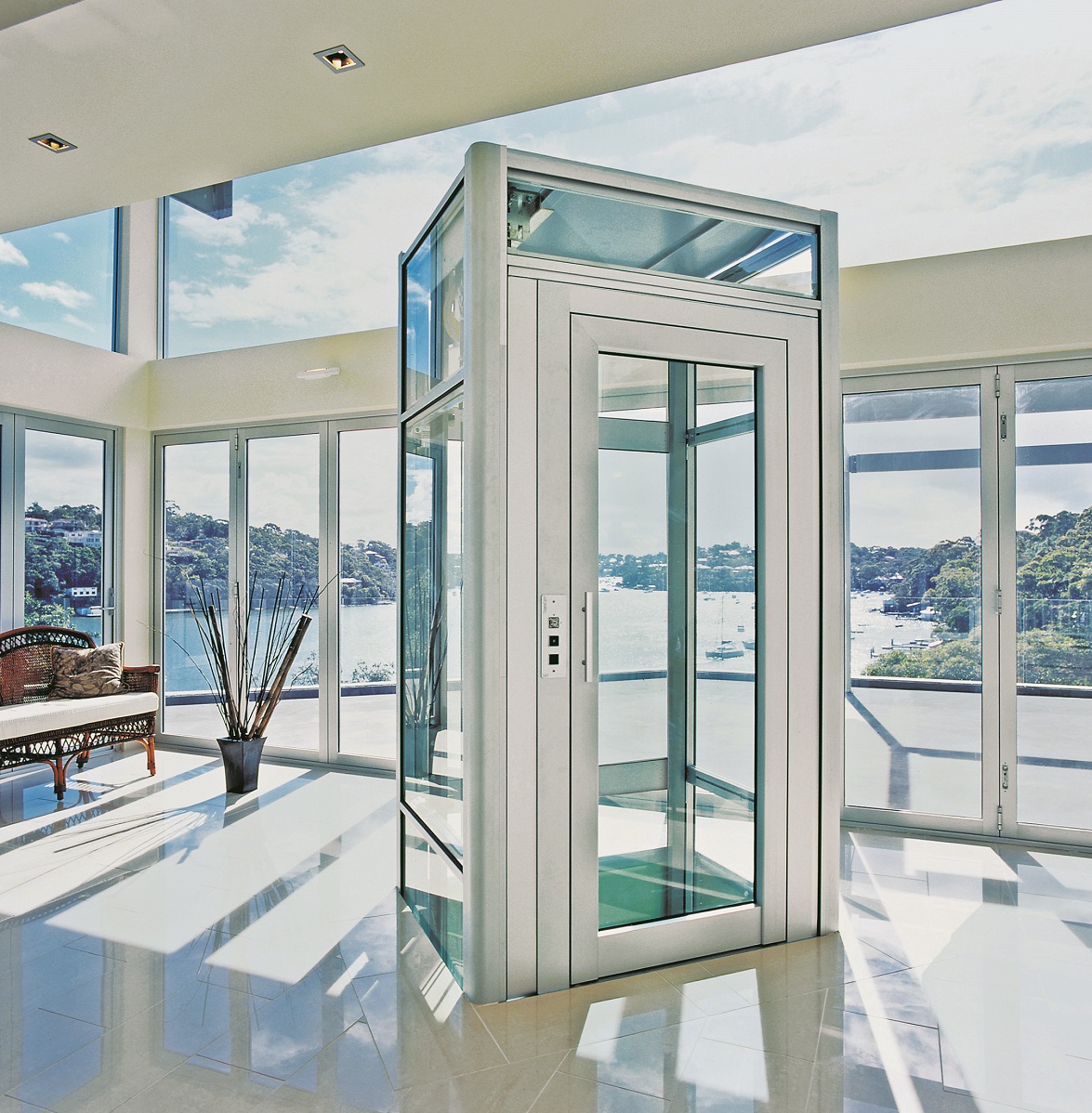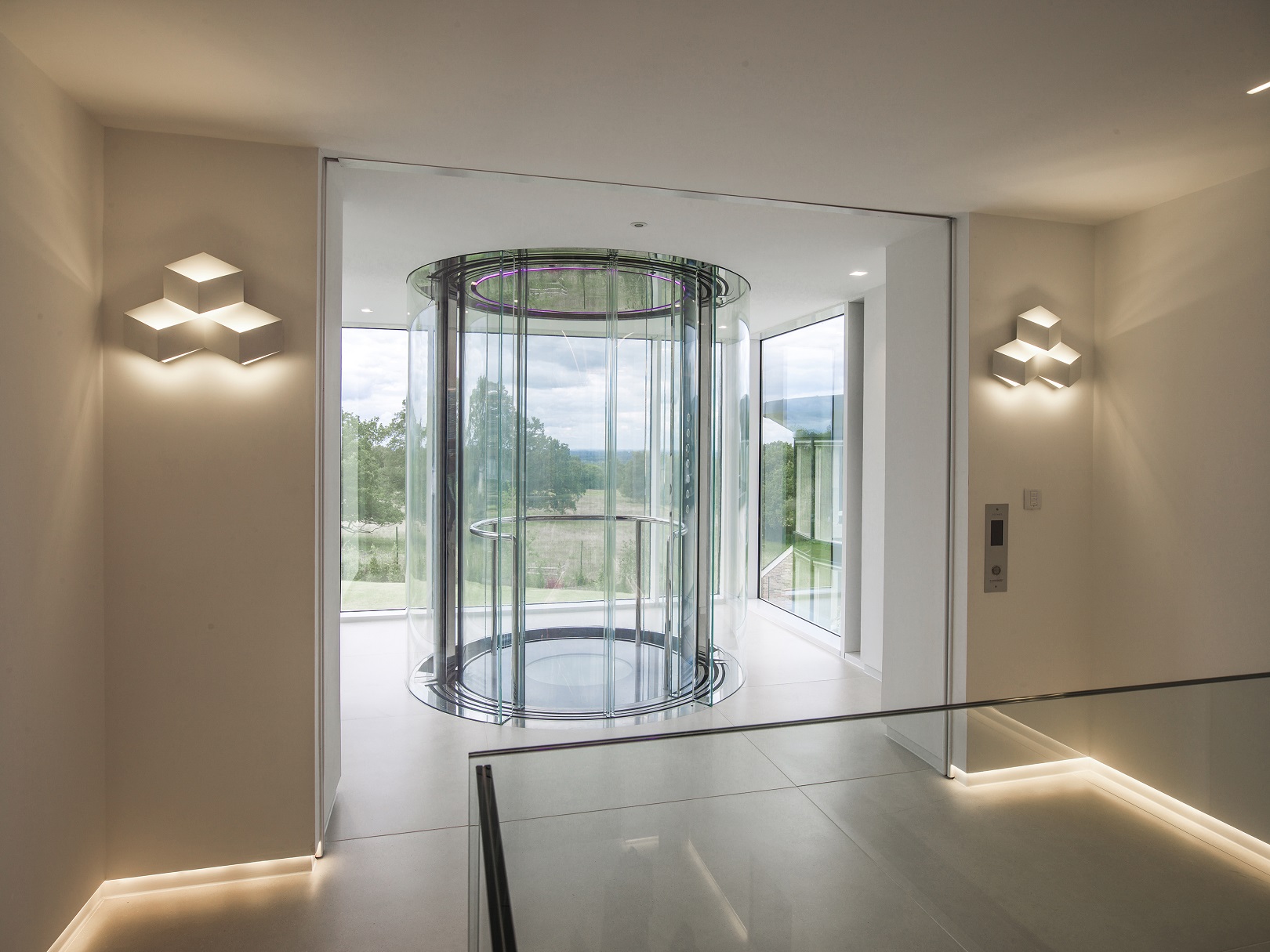Competing with the market economy, the elevator industry in Vietnam is also very active with elevator lines with different advanced technologies. Sometimes, it is that excitement that makes consumers more or less confused as to how to choose. As an overview of the prominent elevator technologies on the market to help elevator buyers be more transparent, this article will provide information on four popular types of drive technology on the market today.
The elevator cabin moves up and down thanks to the cables pulled through the traction machine placed on the top of the shaft (called the type of elevator with machine room), the type inside the shaft (called the type of elevator without machine room).
Advantages: This type of elevator has a high speed (from 45m/min). Prices, investment costs from low to moderate with rich and diverse choices. Public buildings are mostly built of this type of elevator.
Disadvantages: Need to dig deep to the bottom of the hole (also known as a PIT hole). Normally, with an elevator with a speed of 1m/s, the PIT pit has a minimum depth of 1.2m according to current Vietnamese standards and a minimum top of the well of 3.9m. At the same time, the pit must be wide enough to accommodate the cabin, counterweights, cabin rails, counterweight rails and gaps according to safety standards.
Normally, the elevator has a load of 450kg, the elevator speed is 1m/s, the usual size to install the elevator is 1.6m x 1.6m or 1.8m x 1.45m. Currently, thanks to the improvement and efforts of the manufacturers, it is possible that the PIT pit is only from 0.3m to 0.5m, but the bottom of the shaft only needs to be from 2.9m high (no need to build the machine room above).
Dimensions for normal elevator installation are 1.35m x 1.35m, but this size has low travel speed (about 0.4m/s) and limited stroke height (13m equivalent to 3 – 4 feet). floor).

This type of elevator has a tube and the top has an exhaust fan system to create a pressure difference to control the up and down movement of the cabin.
Advantages: Round, transparent wall, beautiful.
Cons: Very low load (about 110kg to 240kg), low speed and especially very low, travel is also very limited. Therefore, this type is not common.
This is a type of elevator with a car up and down thanks to a motor attached to the raised floor, the car up and down clinging to a vertical screw.
Advantages:
– Compact, aesthetic design
– Using transparent glass
– No need for PIT, PIT only needs 10 to 15cm and the top floor only needs to be at least 2.5m. Therefore, the houses that are renovated or do not dig holes use this type very effectively.
Disadvantages:
– Slow moving speed, about 0.15m/s.
Due to the moving motor system, the noise level will affect people’s lives (usually about 70dB equivalent to a vacuum cleaner). Manufacturers have tried to improve noise reduction, but during use, wear and tear in the gear system, the screw will cause the noise to increase. However, if using a screw elevator for public works, the noise level is not ominous.
Because the entire cabin is attached to a single shaft (called a screw) so that the cabin moves up and down along the axis, the higher it goes, the risk of the cabin falling off the base, creating vibrations and shaking. Therefore, screw elevators are often used for buildings with a height of less than 3 floors and an area outside the house for soundproofing is suitable.
Among the types of elevator technology, this is the type with the cabin moving up and down thanks to the hydraulic pump system.

Advantages:
PIT is only from 10 to 15cm, the height of the top floor only needs to be at least 2.5m. Therefore, this type of elevator is also very useful for renovators and those who cannot dig PIT or limit the height.
It can be said that this is the integration of strengths and overcomes the weaknesses between traction cable technology and screw technology because:
– The speed of hydraulic elevator is relatively high from 0.3m/s to 0.6m/s
– Noise only about 40dB
– Travel up to 27m, equivalent to height building building 7 floors
Disadvantages:
– The initial investment cost is higher than the type of traction machine:
The above is a basic summary for you to better understand during the elevator shopping process for your home. You may ask which type of elevator is superior and safer, the answer is that all elevators are manufactured according to standards and brands are safe: Nippon, Mitsubishi,… traction cable technology); Domuslift, Lotuslift,… (hydraulic technology); Apes, Aritco, Cibes,… (screw technology).
The problem is which solution is suitable for your house based on design, needs, purpose of use, … For work, you will use cable to travel a lot; For homeowners to limit digging, use a hydraulic lift.
In addition to the current standard safety functions, most recently, a high-class and modern safety system has been born, making it absolutely safe for users, especially families with the elderly and children, that is SRS – a self-rescue system that does not need outside help, or Emcall – an emergency call system to 5 pre-set relief numbers and relatives. If you have to choose between elevators, you should ask for these two systems to ensure the safety of everyone, in all situations
Luu Hien Minh



